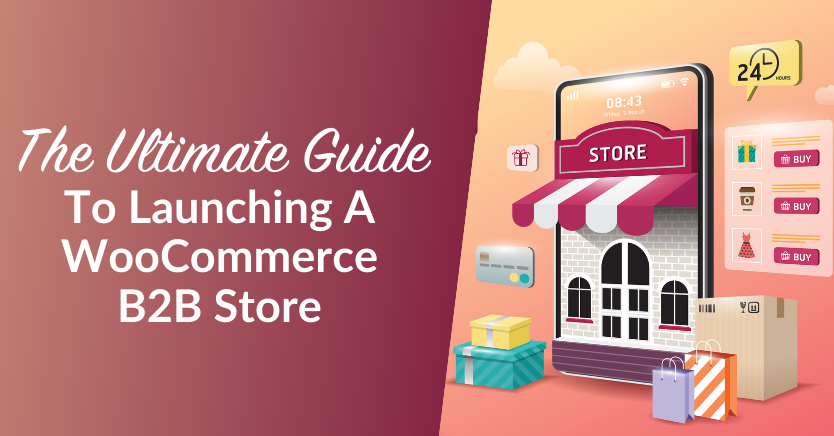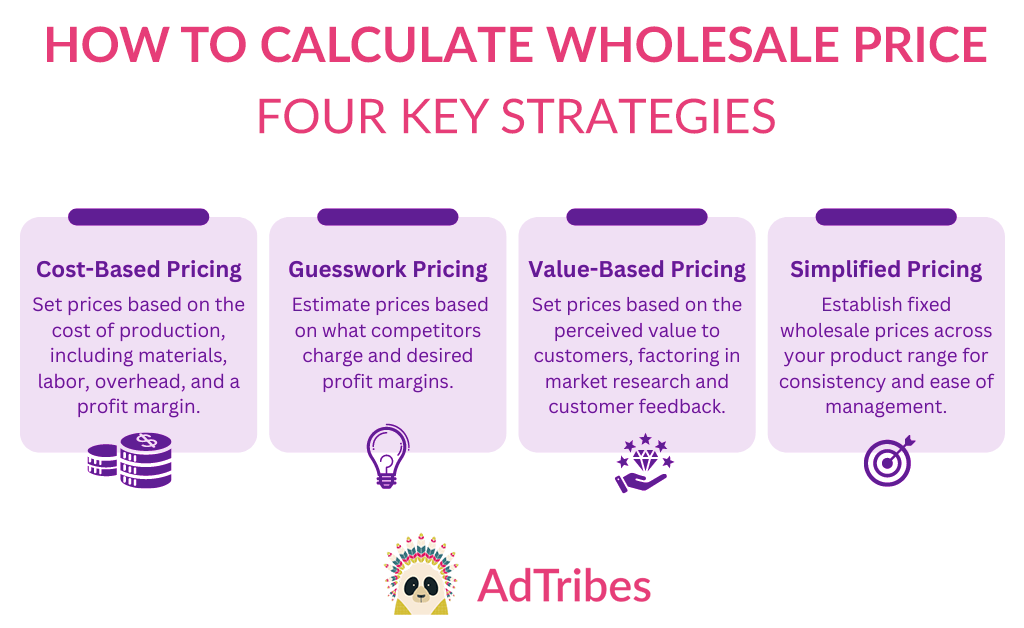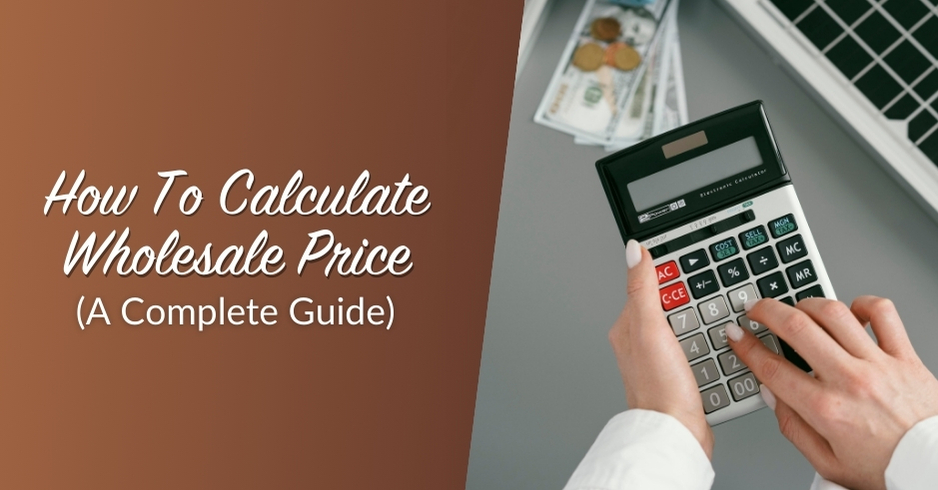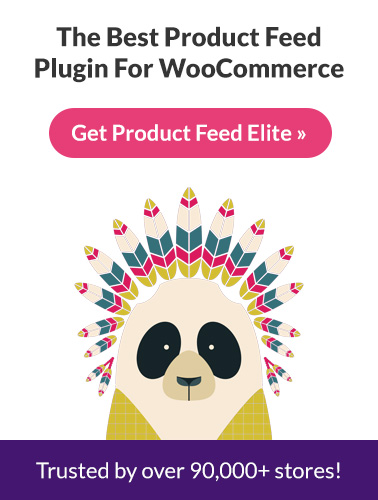
Using product feeds for multichannel selling can help you earn more. Another way to profit is by running an online wholesale store. But first, you need to set the right wholesale price.
Wholesale pricing, also called bulk pricing, is what store owners charge when selling large amounts. It’s usually lower than the regular price because buyers are ordering more at once.
In this article, we’ll walk through how wholesale pricing works and why it matters. We’ll also show how running a wholesale store can go hand in hand with using product feeds to sell your retail products across multiple channels.
So let’s begin!
- I. What Is An Online Wholesale Store?
- II. What Is Wholesale Price?
- III. The Advantages Of Wholesale Pricing
- IV. Wholesaling + Multichannel Selling: Boosting Your Profits
- Conclusion
I. What Is An Online Wholesale Store?
An online wholesale store sells products in large amounts, usually to other businesses. While retail stores sell one or two items to regular shoppers, wholesale stores focus on bulk orders.
Let’s say a retail store sells a pair of shoes for $50 each to individual customers. A regular shopper buys one pair at a time.
Meanwhile, an online wholesale store might sell those same shoes for $30 each, but only if the buyer orders 50 or more pairs at once. A business, like a shoe retailer, would buy in bulk to resell them at a higher price.

What are the benefits of online wholesaling?
Online wholesaling works well for stores that are ready to grow. We’ve seen how it opens up steady income by moving large amounts of stock at once.
With that in mind, the benefits of online wholesaling include:
i. Higher volume sales
Wholesale buyers order in bulk. Basically, that means you sell more items in a single transaction. Instead of shipping one or two products, you’re shipping dozens.
In short, wholesaling is a faster way to move inventory.
ii. Repeat buyers
Once a wholesale buyer likes your prices and delivery, they usually come back. Many even order on a regular schedule. This saves you time trying to find new customers and builds steady business relationships.
It’s also important to note that acquiring new customers usually costs five to seven times more than keeping the ones you already have.
iii. Predictable revenue
Bulk orders often happen monthly or quarterly. That helps you plan your cash flow and restock products in time. It’s easier to track sales and avoid slow months.
In other words, the more regular the orders, the more stable your income.
iv. Lower marketing pressure
One wholesale customer can bring in the same income as many retail shoppers. Therefore, you don’t need to market as much. You can focus on keeping your wholesale customers happy.
Remember, a few good clients can carry your store.
v. Scalable growth
Wholesaling can start small but grow quickly. As word spreads, more businesses may contact you for bulk orders. It becomes a steady income stream you can count on.
For many stores we’ve worked with, wholesale became a big part of their success.
Would you like to know more about wholesale stores? Then check out the following guide:
The Ultimate Guide To Launching A Successful WooCommerce B2B Store
II. What Is Wholesale Price?
Wholesale price, or wholesale rate, is the price businesses set when selling products in large quantities to others who plan to resell them. These lower prices help businesses buy products at a cost they can sell for a higher price to make a profit.
Setting the right wholesale price is important for your business. It affects your profitability and how well your business can grow. With smart pricing, you can cover your costs and still make a good profit.
Getting the pricing right also helps you attract more customers, keep your current customers happy, and stay competitive.
There are four main ways stores set wholesale prices:
1. Cost-based pricing
This strategy adds up all the costs of making a product—like materials, labor, and overhead—and then adds a profit margin. It’s math-based and helps protect profits.
However, this method doesn’t consider what the market or customers think about your product’s value.
Example
You sell handmade candles. Each candle costs $3 in wax and jars. You spend about 30 minutes making each one.
You value your time at $20/hour, so labor is $10. Overhead (electricity, rent, tools) adds $2 per candle.
Lastly, you want a $5 profit.
Thus, your wholesale price would be: $3 + $10 + $2 + $5 = $20
2. Guesswork pricing
With this method, you look at what others charge and try to match or beat their prices. There’s no set formula, just your judgment.
While flexible, this method can be risky if you guess wrong or ignore your real costs.
Example
You make dog collars. After checking Etsy, you see that most sellers charge $25 retail.
You want a 40% margin for your wholesale customers. Therefore, you set your wholesale price at $15, aiming to give retailers room to sell it for $25.
You don’t factor in your actual costs. You just go with what feels competitive.
3. Value-based pricing
Here, the focus is on what customers think your product is worth. You collect feedback, study the market, and price based on that value, while still making sure your costs are covered.
This method takes time and research. However, it can lead to higher profits if done well.
Example
You sell luxury notebooks with hand-drawn covers. Buyers tell you they feel special using them. Similar notebooks in the high-end market sell for $40.
Yours cost $10 to make. You price them at $38 wholesale and $75 retail, based on the value buyers see in the design and brand.
You still cover your costs, but the price is shaped by what you feel is the product’s worth.
4. Simplified wholesale pricing
This means setting fixed wholesale prices across all, or most, of your products. It’s easy to manage, easy for buyers to understand, and makes running promos simpler.
This method works best if your products have similar costs and profit goals.
Example
You sell a line of ceramic mugs. Instead of pricing each size or design differently, you set one wholesale price: $12 per mug. That keeps things simple for buyers.
If you run a promotion, you just say “15% off all mugs,” no special rules needed. Even if some mugs cost a little more to make, the average profit balances out.
Want to know more about how to calculate your store’s wholesale prices? Then read this extensive guide:
III. The Advantages Of Wholesale Pricing
Wholesale pricing isn’t just about selling for less. As you’ll see below, it’s a strategy that helps stores grow, plan ahead, and attract steady buyers.
1. Bigger orders, less effort
Wholesale prices attract bulk buyers. This means fewer transactions, but more items sold each time.
2. Regular, repeat customers
Buyers who like your price often return with more orders. Many even order on a set schedule.
3. Easier to plan your income
Large orders tend to happen monthly or quarterly. This helps you track cash flow and avoid surprise slowdowns.
4. Spend less on ads
One wholesale order can bring in as much money as many small retail ones. This lowers the pressure to spend on marketing.
5. Clear pricing builds trust
When your wholesale prices are fair and consistent, buyers feel more confident. It sets the stage for long-term deals.
6. Helps you stay competitive
Good wholesale pricing gives resellers room to make their own profit. That makes your offer more attractive than stores with tighter margins.
7. Supports business growth
As more resellers find your prices easy to work with, your store can grow faster. Thus, it opens up new opportunities to scale.
IV. Wholesaling + Multichannel Selling: Boosting Your Profits
Running a wholesale store while also using product feeds for retail can really change how a store earns. We’ve worked with stores that do both at the same time, and we’ve seen how it helps them stay flexible when sales shift.
Here are the benefits of combining wholesaling with multichannel selling:
1. Reach two types of buyers
Retail feeds send products to big places like Google Shopping, Facebook Marketplace, and Bing Shopping. Meanwhile, wholesale stores bring in bulk orders that don’t rely on ad clicks or seasonal spikes.
2. Steady cash flow
The two models balance each other out. When retail sales dip, wholesale can keep money coming in, and vice versa.
3. Lower your risk
You’re not putting all your eggs in one basket. We’ve seen stores bounce back from slow months just because they had one big wholesale order lined up.
4. Sell more inventory
The same product can be sold in different ways. One shopper might buy a single unit through your retail feed, while a wholesale buyer grabs an entire case from your bulk page.
5. Reach different shopping cycles
Retail sales often spike during holidays or promo events. Wholesale buyers usually stock up ahead of time, which helps smooth out demand.
Doing both has worked well for stores we’ve helped. After all, this combination brings in more orders, more stability, and more ways to grow.
Conclusion
Wholesale pricing is a smart way for any store to sell more, earn steady money, and grow. When you combine wholesale with your multichannel selling through product feeds, you get the best of both worlds. You can reach more customers, move more products, and keep your cash flow steady all year long.
To recap, this article explored the following ideas:
- What is an online wholesale store
- What is wholesale price
- The advantages of wholesale pricing
- Boosting your profits by combining wholesaling and multichannel selling
Do you have any questions about wholesaling and wholesale prices? Let us know in the comments!






